Garden myths busted
Unsure what's fact and what's fiction when it comes to gardening? Gardening myths are as common as blackbirds in a sunflower field. Some have just become bad habits; others have been passed down for generations. While it may be tempting to believe everything grandma taught you about gardening, there may be a few tidbits you can do without. Here are common myths and the science-based facts that refute them.
Soil
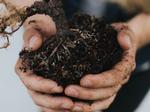
Fact: Fresh coffee grounds are acidic, but used coffee grounds are not. They're neutral. Therefore, adding your used coffee grounds won't change your soil pH. A better idea? Add used grounds to the compost pile instead. Learn more about soil pH and composting.
Myth: Add unlimited grass clippings to the compost pile.
Fact: A compost pile needs to have the right mix of carbon and nitrogen. The ratio should be 30 parts carbon to one part nitrogen by weight. The easiest way to achieve this is to aim for equal amounts of green and brown materials. Grass clippings qualify as green material and have a carbon to nitrogen ratio of 19:1. Adding unlimited quantities of grass clippings creates a moisture and air barrier in the compost pile. This promotes the growth of mold, creates bad odors, and slows down decomposition. Learn more about troubleshooting compost issues.
Myth: Placing banana peels in soil adds potassium.
Fact: Bananas and their peels do contain potassium, which stimulates plant growth and flower production. Unfortunately, the amount of nitrogen needed to break down the peel means less nitrogen is available for greening plants. Plus, putting peels in shallow soil may attract unwelcome wildlife. A better idea? Add banana peels to compost bin and learn more about fertilizer and soil amendments.
Myth: Eggshells are good for the compost pile.
Fact: While chicken eggshells contain nutrients that plants can use, including calcium, sulfur, magnesium, potassium, and sodium, you would need to use huge quantities of eggshells to add a significant amount to soil. Also, even when pulverized into powder, they take many years to add value to the garden. Although the powder disappears and cannot be seen, they have not chemically decomposed. Learn how to keep soil healthy.
Myth: Clay soil is always bad.
Fact: Clay soil can be difficult to dig and can cause drainage and aeration problems. But clay also happens to be a nutrient magnet for plants. Clay's surface structure and chemical properties naturally attract many of the essential elements of plant nutrition, including calcium, magnesium, potassium, hydrogen, and iron, among others. Adding sand to clay does not loosen the clay soil; in fact, it will make it cement-like. Learn more about managing common soil issues and plants that grow in clay soil.
Myth: The best way to plant is to fill the newly dug hole with soil amendments.
Fact: Studies show that nothing is gained by amending backfill with organic matter, fertilizer, or other material. And sometimes it can be harmful. For instance, adding fertilizer in a planting hole too close to the plant's roots can chemically burn them. Research shows that the best planting practice is to backfill with the soil you shoveled out and to add a layer of organic mulch to improve soil structure, conserve water, and discourage weeds. This planting method is especially successful for native and/or Mediterranean climate plants. Learn how to plant.
Myth: Adding amendments to soil will change soil texture.
Fact: Soil structure can be changed, but not soil texture. Soil texture is how soil feels to the touch and when it is worked with tools. It is the percentage of sand, silt, and clay and determines the tilth or the fitness of the soil as well as its holding capacity for nutrients and water. On the other hand, soil structure is the aggregation of soil particles with organic matter. Structure affects moisture availability to plants through water movement, fertility, aeration, and porosity. Soil structure can be changed and improved with the addition of organic matter such as humus, earthworm castings, and compost. Learn more about the physical and chemical properties of soil.
Pests
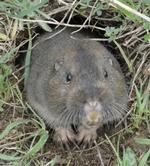
Fact: Not even close. Don't waste your time or your gum. This doesn't work. Use traps to manage gophers.
Myth: Organic pesticides are always safer than synthetic pesticides.
"Natural" does not always mean better or safer. Take nicotine sulfate, for instance, an insecticide that is derived from tobacco. This organic product is extremely toxic to humans and other animals if it is absorbed through the skin. Another common insecticide, rotenone, is derived from the roots of tropical bean plants. This sounds innocuous, but it is considerably more toxic than its synthetic equivalent. Nicotine and rotenone break down rapidly, which means the biggest hazard is to the people and wildlife present at the time of application. Always start with the least toxic control option available and read product labels and precautions closely. Learn more about how to solve plant problems. Still not sure how to proceed? Contact the UC Marin Master Gardener Help Desk.
Weeds
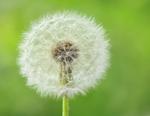
Fact: Vinegar may kill because it's caustic. It might be effective on a small annual weed, but it's unlikely to translocate downward. Therefore, it will be ineffective against perennial weeds. Plus, if you keep adding vinegar to your soil, you run the risk of acidifying it. Learn more about managing weeds.
Myth: Landscape fabric is a permanent solution for weed control.
Fact: Landscape fabric is not effective or recommended for permanent weed control around perennials. If left exposed, the fabric can degrade in a year. If covered with mulch or if plant debris accumulates, weeds may colonize the plant material or mulch and grow through the fabric, making it difficult to remove. Plants may also grow into the fabric, so when you remove the fabric, you damage their roots. As the fabric degrades and shredded bits appear, it looks unattractive and becomes a maintenance headache. Gophers can exert so much pressure from underground that the fabric rips or becomes a series of exposed landscape-fabric-covered mounds. Unfortunately, there is no magic bullet for weed control. You can reduce them, but you still need to remain vigilant no matter what method you use. Organic mulches are best as they improve soil texture and health and can be replenished as needed. Learn more about managing weeds.
Myth: Planting invasive plants is no big deal.
Fact: They sell ivy and broom at the nursery, so it must be okay to plant them, right? Wrong. Invasive plants take a toll in numerous ways. They overrun native species and reduce the number of pollinators, ultimately altering the food web. They proliferate so quickly and densely that they can increase the risk of fire. Native species help keep soil and waterways healthy, while invasive species do not. Invasive species are also expensive, costing billions of dollars every year to eradicate. Invasive species change the look and feel of our natural environment. Learn more about plants to avoid.
Diseases
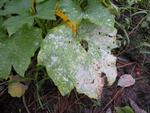
Fact: This can help; however, the problem is that you're adding sodium bicarbonate, a salt, to your plants and soil. Since repeat applications are necessary, this can cause burning of the foliage AND it can add salt to the soil, which is not something you want. Bottom line? It might work in the short term, but it's not the best solution. Learn more about managing powdery mildew.
Pruning

Fact: No need to paint anything on pruning cuts. If you prune properly, trees will heal themselves. Healthy trees are naturally resistant to insect attack and dressing a wound actually may decrease the effectiveness of the tree’s own recovery process. Tree bark has its own defense mechanism. When the bark is injured, it naturally calluses over and compartmentalizes the wound to prevent decay, insects, fungi, and microorganisms from attacking. The tree isolates the wound and physically and chemically repels invasion or infection. For best results, make proper pruning cuts and use sterilized sharp tools at the correct time of year for the tree or shrub. Learn more about pruning.
Vegetable gardening
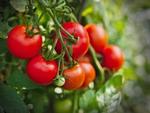
Fact: This sounds painful (and exhibitionist)! Taking the temperature of soil before planting seeds or seedlings is important. For most vegetables, the soil should be between 60°F and 65°F when measured three inches deep. This warm soil helps roots to grow. Learn more about taking your soil's temperature.
Myth: Spreading crushed eggshells in the vegetable garden cures blossom end rot because the calcium leaches into the soil.
Fact: Unless the eggshells are ground into a fine powder and are put into an acidic solution, the calcium stays intact. Archaeological digs have found undecomposed eggshells. Calcium sprays are also ineffective, because calcium cannot be absorbed through tomato or pepper skin, and it does not move into fruit when sprayed on the foliage. More importantly, plants do not tend toward calcium deficiency in the first place. Blossom end rot is almost always an issue with soil moisture and temperature, often caused by erratic watering. Learn more about blossom end rot.
Myth: Suckers must be removed from tomato plants.
Fact: Tomato plants will grow and produce well if you leave all the suckers on the plant. However, pruning suckers will result in larger fruit. Be sure to remove the suckers by hand with a quick snap before they are three inches long. Prune on a sunny, dry day so the wound dries quickly. Do not remove suckers on determinate tomatoes. Learn more about growing tomatoes.
Myth: For a plant to bear fruit, you must have both male and female types.
Fact: That is true for some species, but many plants and trees are self- pollinating. Most garden vegetables, including summer squash and pumpkins, produce both male and female flowers. Bees make sure the pollen gets spread around. Tomatoes, pomegranates, and most varieties of Asian persimmons are also self-pollinating. In contrast, sweet cherries and kiwis will not produce fruit unless you have both a male and a female plant. Some apple varieties may be listed as self-fruitful, but you'll get more fruit if you have a second variety to cross pollinate. Learn more about good edible plant varieties for Marin County.
Containers
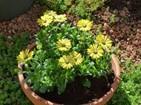
Fact: The opposite is true. Rocks in the bottom of pots can block or restrict water drainage by reducing the size of the drainage hole. It is hard for water to move from fine-grained soil (such as potting mix) to coarser material (such as gravel). The water must saturate the fine-grained material first. So, by putting pebbles at the bottom of a pot, you actually are encouraging the problem (waterlogged soil) that you're trying to prevent. The best course is to fill the entire pot with high-quality planting mix. You can also elevate the pot slightly so that water can drain more easily. Learn more about container gardening.
Fertilizer
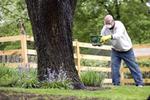
Fact: Too much fertilizer can create high soluble-salt levels that can burn the roots and lead to plant decline. And tossing fertilizer into a struggling garden indiscriminately will often have little effect, and the excess will be swept away in the next rainstorm where it will slosh down storm drains and end up polluting our beloved bay. Most plants can get everything they need from soil that has been amended with compost and topped with mulch. Learn more about fertilizing.
Myth: Use vitamin B1 when you plant in order to avoid transplant shock.
Fact: Studies show that vitamin B1 alone does nothing to speed rooting or prevent transplant shock. Make sure to choose a spot that suits the particular plant's preferred growing conditions in terms of sun exposure and drainage. Minimize stress by planting on relatively cooler days and shadier times of day. Do not let transplanted plants dry out. Learn more about propagation.
Myth: You should fertilize landscape trees and shrubs every year.
Fact: While trees and shrubs less than two years old may benefit from fertilizing, research shows that with few exceptions, mature trees and shrubs in California do not need fertilizer if they are reasonably healthy -- that is, the leaves look healthy and there is new shoot growth each year. Usually when fertilizer is needed, only nitrogen is necessary because California soils are most commonly deficient only in nitrogen. Learn when and how to fertilize.
Myth: Use Epsom salts to fertilize your plants.
Fact: Epsom salts provide magnesium and sulfur. They are soluble, so they dissipate in soil that receives irrigation or rainfall. Unfortunately, the excess is likely to end up polluting groundwater. Epsom salts got their reputation as a fertilizer because they can help relieve magnesium deficiencies. One sign of magnesium or sulfur deficiency is chlorosis in leaves, which causes yellowing of the tissue between the veins. But if your plants aren't magnesium-deficient, Epsom salts won't help them grow. Magnesium deficiencies are best solved with a slow-release source of magnesium. Most magnesium deficiencies occur in intensely cultivated soil, or in light, sandy soil. Learn more about chlorosis.
Timing

Fact: Acorn production varies from year to year according to many factors including the species of oak, the amount of rainfall, fluctuations in the climate, and the prevalence of pests and disease. Oaks produce acorns every three to five years in quantities sufficient for animals to eat and ensure adequate tree replacement. Learn more about oak trees.
Water
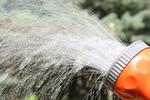
Fact: This is often the case, and you can check to see if your soil is dry. But there are other reasons that a plant's leaves could be wilting. For instance, waterlogged soil deprives roots of oxygen, which can result in wilting. Keeping soil too moist can also promote fungal disease like verticillium and fusarium. Another culprit for wilting leaves is animal damage to the roots. Gophers, nematodes, and other insects feed directly on roots, and other animals may create tunnels that drastically reduce root contact with surrounding soils. Another possible cause of wilting is overfertilizing or excess salt in the soil. Learn more about irrigation.
Myth: Native plants do not require water.
Fact: Wrong. Native plants require water initially and in the first year after planting so the roots work their way deep into the soil. Once mature, many are able to thrive in the local climate. Learn more about native plants.
Myth: Drought tolerant is the same as drought resistant.
Fact: Drought tolerant plants have adapted over time to tolerate periods of little or no water. Drought-resistant plants, like cacti, are designed by nature to require very little water.. Learn more about extra low-water plants.
Myth: Water on plant leaves in full sun causes the leaves to burn.
Fact: No. Although it is better to water early in the morning, water left on the leaves does not burn the leaves. Burn marks may be a sign of fungus or bacteria, an indication that the plant roots have absorbed a substance that manifests itself on the plant leaf, or a sign that the plant is not getting enough water.
Lawn
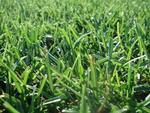
Fact: Lawns are, quite simply, maintenance hogs. To keep a lawn looking good, you must water (a lot), mow, fertilize, edge, aerate, and weed. And that's just the ongoing maintenance. You will also need to trap the occasional underground varmint, repair sprinkler heads, and seed or patch bare spots. That sound you hear? It's the shrubs in your garden laughing at all the time you spend babying that water-guzzling grass. Learn more about how to replace a lawn.
Myth: It's okay to water the lawn at any time.
Fact: The best time to water your lawn is in the early morning so the grass blades can dry out during the day and not be a cool, wet place for fungus to thrive. Also, less water will be lost to evaporation. Learn more about saving water in the garden.
Myth: Grass clippings left on the lawn cause thatch.
Fact: Thatch is a layer of grass stems and roots, living and dead organic matter that has settled on the grass or ground. Excessive thatch (over a half-inch thick) creates a favorable environment for pests and disease and an unfavorable growing environment for grass roots. Short clippings left on the lawn after mowing are not the cause of thatch buildup. Clippings are very high in water content and breakdown rapidly. Excessive watering and fertilizing have more to do with the buildup of thatch because they cause the lawn to grow very rapidly, inhibiting the decomposition of organic matter at ground level. Learn more about lawn care.
Bulbs
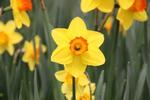
Fact: Knotting or braiding restricts photosynthesis. The part of the leaf that is not exposed to the sun is unable to transform sunlight energy into stored chemical energy, which allows the bulb to produce new leaves and flowers in the next season.
